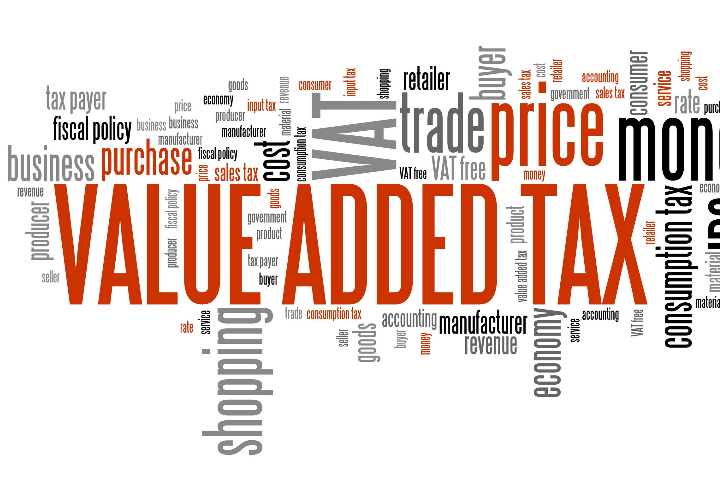Ever since GST, there is not much talk about Value Added Tax – right? VAT is the consumption of tax on goods and services levied at every stage of the supply chain, and where value is added, from the initial production right until the point of selling a product. The VAT that a user pays is according to the cost of the product, subtracting the costs of materials that were used in that particular product and have already been taxed in the previous stage. We can’t explain VAT in just one paragraph. We have got to know everything from a to z. So, here we are going to talk about Value Added Tax.
What is Value Added Tax?
VAT is a type of tax applied on the sale of goods and services when they are eventually sold to the customer. VAT is an essential component of any country’s GDP. While VAT is collected on the sale of goods and services and paid to the government by producers, the actual tax is levied on customers or end-users who purchase these goods and services.
As a result, it is an indirect tax paid to the government by customers through producers of products and services.
VAT is a multi-stage tax that is levied at each stage of the production of products and services that involves the sale/purchase of goods and services. Anyone who earns more than Rs.5 lakh in annual revenue from the supply of goods and services is required to register for VAT payment.
Value added tax in India is charged on both domestic and imported goods.
What was the Impact of VAT?
India was one of the latest countries to implement VAT as a tax. The Indian taxation system was seen to be most exploited by business people and enterprises that had discovered loopholes for dodging taxes. VAT was implemented to reduce tax evasion and to provide openness and uniformity in the tax payment process.
Value Added Tax is levied at various stages of the production of products and services and is governed by several state governments. As a result, VAT in India may differ slightly from one state to the next.
- There are no exemptions under the VAT system. Taxing at each level of the manufacturing process ensures improved compliance and fewer loopholes to exploit.
- VAT, when effectively implemented, serves as a key tool for tax consolidation in the country and, as such, contributes to the resolution of the fiscal deficit issue to some extent.
- Because VAT is a widely accepted taxing system, it will assist India in better integrating into global trade patterns.
Though we discussed all of this – there are a few negative sides to VAT. Do you want to know them? Here they are mentioned below.
The Drawbacks of VAT
- Taxation has a cascading impact.
- It was not feasible to claim Input Tax Credit (ITC) on VAT-registered services.
- Varying states have different VAT rates.
- Each state has its own VAT law.
- CST input cannot be offset against VAT and vice versa.
Is VAT Still Applicable in India?
The answer to this can be said to you in the following way.
Value Added Tax implementation guidelines and procedures differ from state to state because the tax is collected by state governments.
Nil: This category of goods and services is exempt from VAT. These are the most basic commodities sold in the unorganised sector. Khadi, salt, and other such products are examples.
- VAT is levied at a rate of 1% on the items in this category. On relatively expensive items, a 1% VAT is frequently levied. The reason that VAT is levied at 1% on expensive goods is that increasing the rate of VAT will significantly raise the prices of the items in this category. Products that fit under this category include gold, silver, precious stones, and so on.
- VAT is levied at a rate of 4% to 5% on various items that are used on a daily basis. Cooking oil, tea, pharmaceuticals, and other things are examples of items that are subject to a 4-5% VAT.
- General: Items in the general category are subject to VAT at a rate ranging from 12% to 15%. This category primarily includes luxury things such as cigarettes, wine, and so on.
Did you know about the registration of VAT? If you don’t – stay put. We can learn it here.
What is the Registration of VAT?
VAT registration is required for all manufacturers who participate in the production of goods and services. The registration procedure entails designating the company as a corporation eligible to file a VAT return with the government. According to the VAT Registration Act, all businesses are required to register for Value Added Tax payments. It is possible to register online, making the process quick and efficient.
Here are the steps for registering for VAT online:
- Navigate to the official VAT portal. Login or register using the registration tab.
- Fill in all of the requested information. Remember to provide scanned copies of the required papers with your application.
- You could get a temporary VAT registration number right now.
- However, once the authorities have completed the verification of the provided facts, the company is granted a permanent VAT registration number.
So, here we wind up hoping you understood VAT in India.
Conclusion
Most think of taxes as a burden since it costs us more. But, in truth, it’s the gratitude for betterment. It’s always good to know more about these taxes, and it’s great you sat through this piece on value-added tax.

